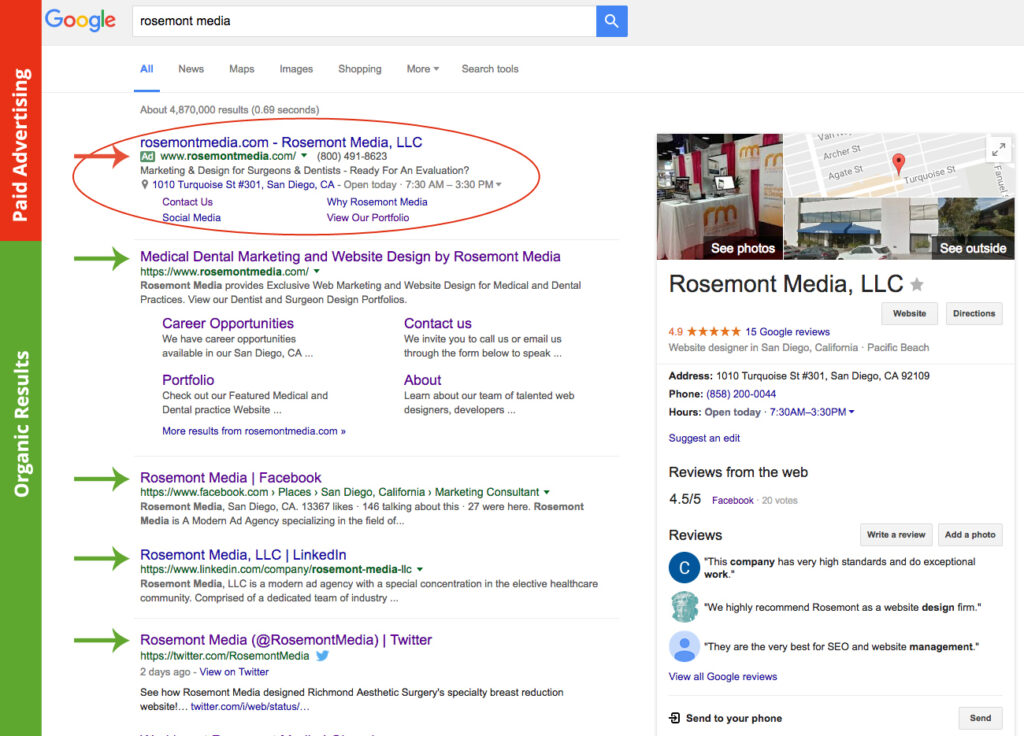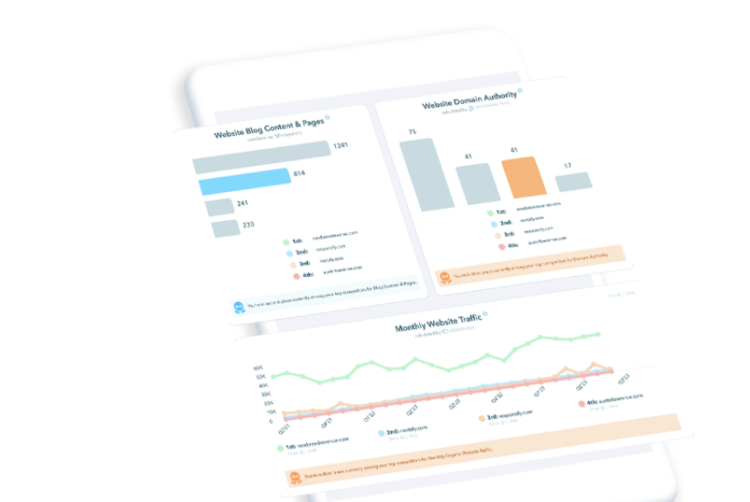 985 Views
985 Views  5 min read
5 min readSo you say that your startup has a proof of concept, a fair amount of early adopters, and now your company has won the love of investors (funding! ding! ding! ding!). Your marketing efforts have helped you get this far, but you need all the help you can get to make your marketing more effective and to scale your startup’s revenue. Sound familiar? We thought so. Well hold on tight, we’re going to take you for a ride through Inbound Town where you will learn how to scale a startup fast after an investment round.
The new consumer doesn’t just want to buy a product or service, they want to connect with a brand. When your brand can be a thought leader in it’s industry, it builds trust with people and credibility, differentiating you from the competition. Get clear on WHY your brand exists. As the leader of inspiration, Simon Sinek says in his famous TedTalk, “People don’t buy what you do; they buy why you do it. The goal is not to do business with everybody who needs what you have. The goal is to do business with people who believe what you believe.”. Following the next two tips will help you BE a thought leader to your prospects and customers.
Inbound Marketing is the effective method of creating content for potential customers based on their needs and wants. This approach focuses on attracting visitors to your company’s website while they are researching solutions, which converts them to qualified leads by offering premium content, and helps to turn those leads into customers. Inbound Marketing gives startups the power to develop a cult following by being the thought leader and resource center for their customers (and increase sales!) Before creating content and deploying it across the interwebs, there’s some important research and strategy needed in place. Here’s a few: Buyer Persona Defining is the key to outlining your ideal buyers. Outlining in detail their interests, job functions, needs, pains, gains, and more is crucial to understanding them so that writers can empathize with them and create content that resonates. Ideally this process is conducted with a third-party partner who specializes in this, due to the many aspects of a buyer that need to be researched and documented.  (noreferrer nofollow”>Source) Buyer Journey Mapping is a part of the process that includes mapping out what drives buyers to begin research online, what questions they have while they are becoming aware of a problem, considering finding or paying for a solution, and deciding on which solution is best for them. This stage is critical as it provides you with the knowledge to come up with ideas to build content that potential customers will find valuable. Keyword Research is the next important part of the Inbound strategy development process. Instead of only search engine optimizing previously created content, doing proactive keyword research allows you to see what your ideal buyers are actually searching for, where the opportunities are, and how to create content based on those insights. Again, this part of the process generally takes a few days, and typically is best conducted with a third party partner who specializes in this type of research alongside Buyer Persona Defining and Mapping. Content Outlining after the previous steps is obviously an important part of your Inbound Strategy. During this stage, things like Blog titles and eBooks titles are outlined for each of your defined Buyer Personas, and include the keywords discovered in the Keyword Research phase. Making sure that the right amount of content is outlined across buying stages (Awareness, Consideration, Decision) ensures potential customers have content to engage with throughout their buying process. Inbound Campaign Setup is the process of detailing what the content will be (blog posts, videos, eBooks, etc.), how the content will be distributed (blog, facebook, twitter, Linkedin, forums, etc.), and which tools are best-suited for managing and tracking the results of your inbound campaigns.
(noreferrer nofollow”>Source) Buyer Journey Mapping is a part of the process that includes mapping out what drives buyers to begin research online, what questions they have while they are becoming aware of a problem, considering finding or paying for a solution, and deciding on which solution is best for them. This stage is critical as it provides you with the knowledge to come up with ideas to build content that potential customers will find valuable. Keyword Research is the next important part of the Inbound strategy development process. Instead of only search engine optimizing previously created content, doing proactive keyword research allows you to see what your ideal buyers are actually searching for, where the opportunities are, and how to create content based on those insights. Again, this part of the process generally takes a few days, and typically is best conducted with a third party partner who specializes in this type of research alongside Buyer Persona Defining and Mapping. Content Outlining after the previous steps is obviously an important part of your Inbound Strategy. During this stage, things like Blog titles and eBooks titles are outlined for each of your defined Buyer Personas, and include the keywords discovered in the Keyword Research phase. Making sure that the right amount of content is outlined across buying stages (Awareness, Consideration, Decision) ensures potential customers have content to engage with throughout their buying process. Inbound Campaign Setup is the process of detailing what the content will be (blog posts, videos, eBooks, etc.), how the content will be distributed (blog, facebook, twitter, Linkedin, forums, etc.), and which tools are best-suited for managing and tracking the results of your inbound campaigns.
We all know the point of marketing is to help a company get more customers and happier customers. When you create the content your customers want, you get both! Best of all, if content is centered on your customer needs (not on your product or service, its features, or your company), they will find YOU through organic web searches, without your having to buy their love (expensive PPC campaigns, etc.).  (noreferrer nofollow”>Source) Following a well-orchestrated content and inbound marketing strategy will enable you to leverage the power of content to attract new website visitors, and to organically convert them to interested leads. Developing the content your customers want on a consistent basis (at least 1 article per week), posting on your company’s Blog, promoting on select social media channels, and tracking metrics with tools like Hubspot or Market are all part of Inbound Marketing, and require a team of creative and technical professionals to implement successfully. We recommend if you have a marketing team of 8 or more people, to get members of your team certified in Inbound Marketing and implement on your own. If you have a smaller marketing team, you may consider working with an expert Inbound Marketing team like ours, to help you get the strategy and content you need to increase success.
(noreferrer nofollow”>Source) Following a well-orchestrated content and inbound marketing strategy will enable you to leverage the power of content to attract new website visitors, and to organically convert them to interested leads. Developing the content your customers want on a consistent basis (at least 1 article per week), posting on your company’s Blog, promoting on select social media channels, and tracking metrics with tools like Hubspot or Market are all part of Inbound Marketing, and require a team of creative and technical professionals to implement successfully. We recommend if you have a marketing team of 8 or more people, to get members of your team certified in Inbound Marketing and implement on your own. If you have a smaller marketing team, you may consider working with an expert Inbound Marketing team like ours, to help you get the strategy and content you need to increase success.
These four tactics are crucial when it comes to how to scale a startup. Like anything else, good planning and thoughtful implementation are fundamental. Knowing how well your Content and Inbound Marketing efforts are going and where you could improve requires advanced tracking tools. The common robust platforms that work well for handling all the Inbound components are Hubspot and Marketo. Finding the right platform, configuring it well, and utilizing its functionalities (Email Marketing Automation, Form Building, Lead Scoring, etc.) will help you keep your Inbound engine running smoothly.
In order to master the art of “how to scale a startup” for periodic investment, you need to get the right marketing strategies, methods, and systems in place. Correctly building trust with prospective customers to gain market share can quickly be achieved with a well-implemented and managed Inbound Marketing program. We hope these tips on how to scale a startup were helpful. If you want to learn more about how to leverage the best marketing strategies for your startup, feel free to grab our complimentary eBook: The Ultimate Startup Marketing QuickStart Guide for Startups with Series A or B Funding. If you have any questions about how to get started with an Inbound Strategy to grow your startup, and how to scale a startup, don’t be shy, reserve a time to speak with us here. We’re here to help.
